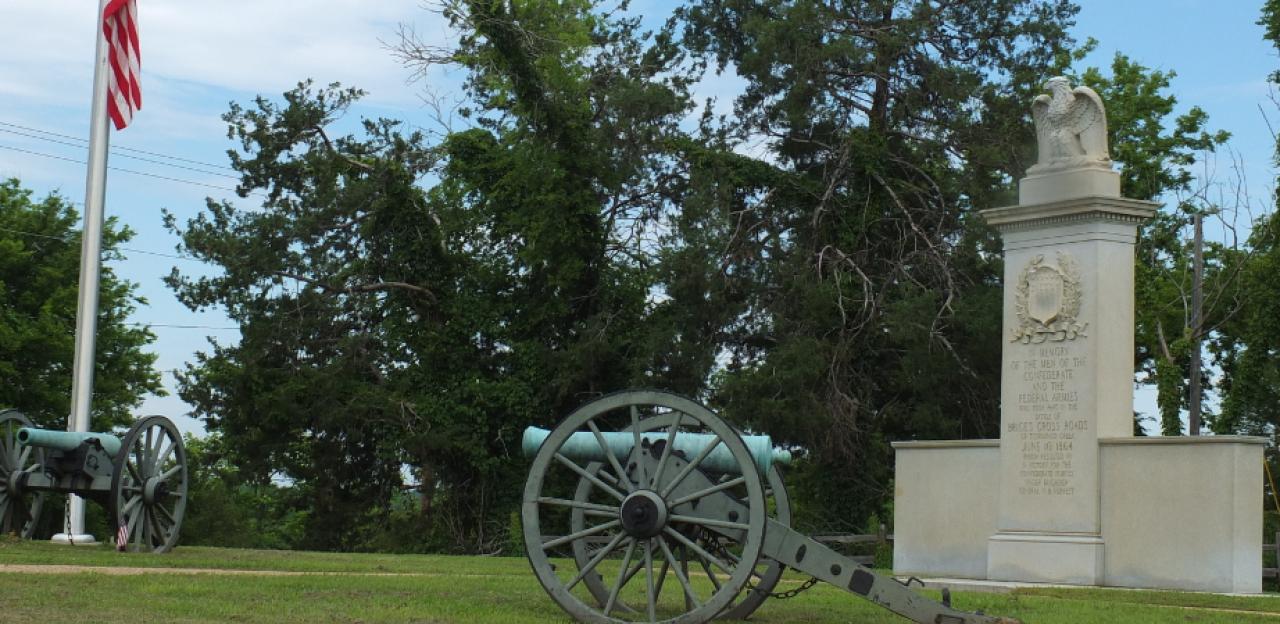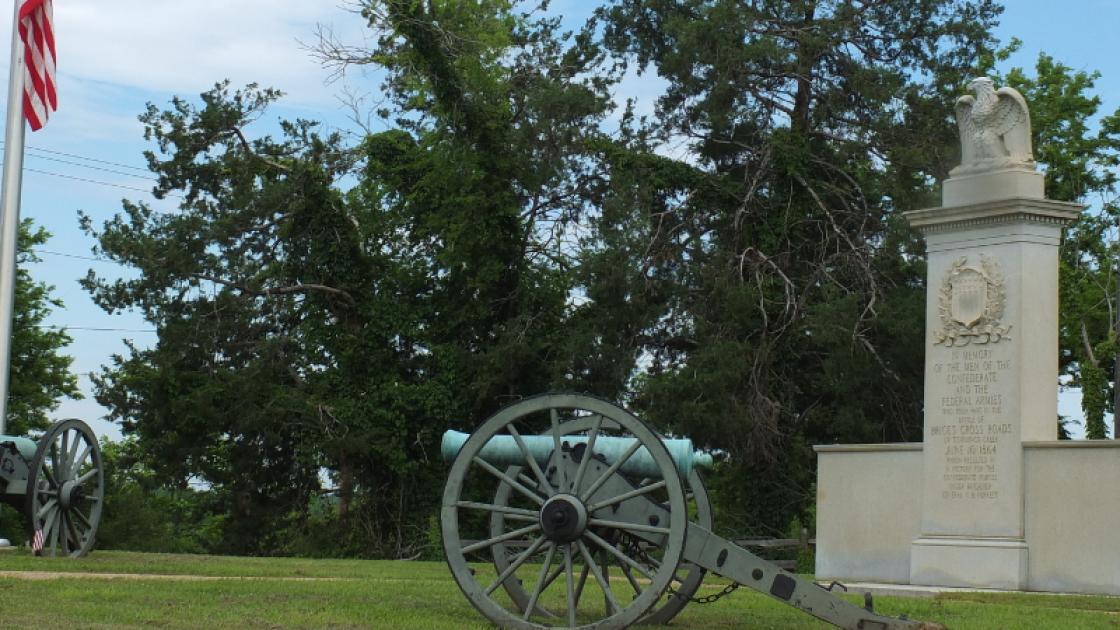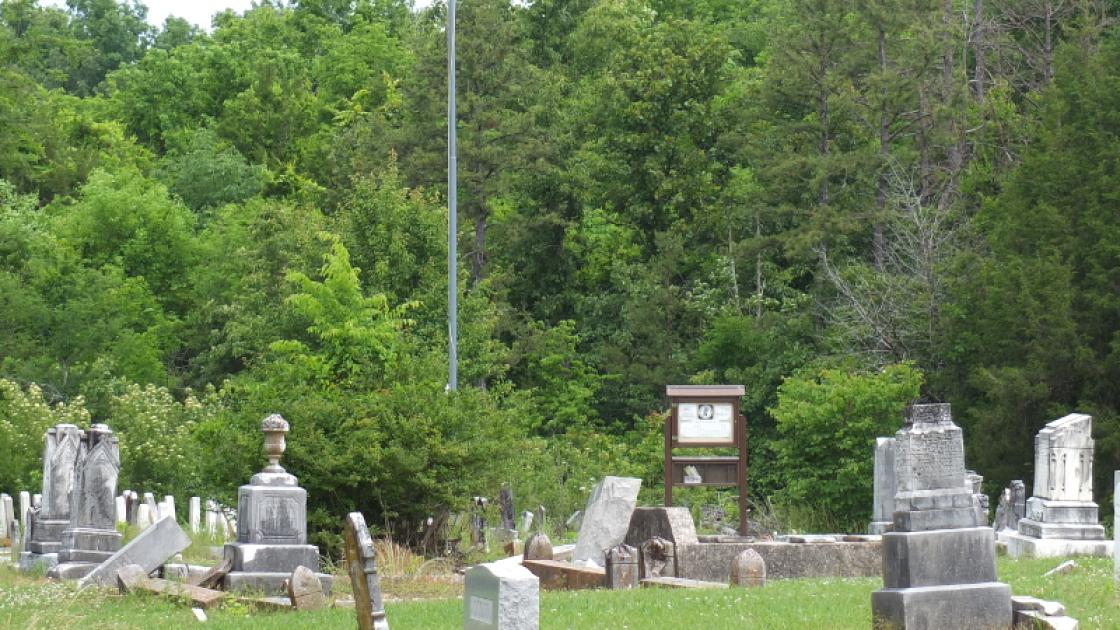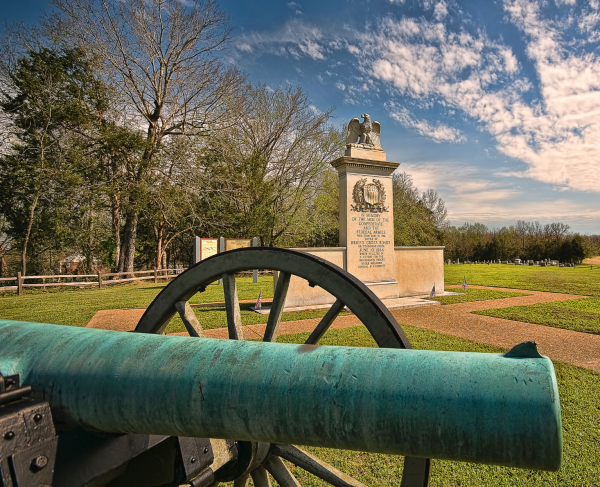An Entire Battlefield Saved

By Bob Zeller
One of the Civil War Trust’s greatest success stories, the preservation of the Brice’s Cross Roads Battlefield in north Mississippi, had its roots at a dinner organized to save another Civil War battlefield.
“It all started about 1989 or 1990, when I was at a dinner in Corinth and somebody was speaking about preserving the battlefield there,” said Tupelo attorney Gary Carnathan. “I got to talking to some of the preservationists there, and we all got to talking about Brice’s Cross Roads. So we conceived of the idea of starting a nonprofit organization to see what we could do to maybe save some property.”

Carnathan, a lawyer who “should have been a historian,” enlisted the help of another deeply committed history buff, John Haynes, a banker in Baldwyn, Miss., a small town six miles east of the rural battlefield. Haynes saw something in the venture beyond just saving history.
“I got involved because it was an opportunity for our community to develop something that would have a positive economic impact,” Haynes said. “Basically, it’s better than having a factory or an industry. It creates a whole new area of green space where people can take their kids and preserve American history.”
The history at that muddy Mississippi crossroads happened on June 10, 1864, when Confederate Maj. Gen. Nathan Bedford Forrest and his 3,500 horsemen brilliantly outfought Union Brig. Gen. Samuel D. Sturgis and 8,100 federal infantrymen. Union Maj. Gen. William Tecumseh Sherman had sent Sturgis into Mississippi to stop Forrest, whose raids were wreaking havoc on Sherman’s vulnerable supply and communications lines through Tennessee. At the tiny Mississippi crossroads, Forrest’s men hit the Union forces on the flanks, and the ensuing rout became a wild flight back to Tennessee, with the Confederates capturing more than 1,500 Federals.
When Carnathan, Haynes and others organized the nonprofit Brice’s Crossroads National Battlefield Commission in 1994, they found willing sellers among those who owned the farmland where the battle had been fought.
“One of the unique things about the land around Brice’s is that it basically became dairy farms after the Civil War, so it was always in larger tracts,” Haynes said. “But dairy farming has kind of played out in north Mississippi, and there are few dairy farms left. That kind of made land available where it wasn’t 30 years ago.”
The process, as concisely simplified by Carnathan, “was one of those things where you think about it and you start talking about it and things come into play and after a lot of hard work, all of a sudden you’ve got it.”
The first two acquisitions at Brice’s in 1996, totaling 797.7 acres, comprised about two thirds of the core battlefield. The purchases were hailed as a model for battlefield preservation, if only because of the number of entities involved.
Haynes’s bank, Farmers and Merchants, provided initial start-up funding. The Lee County Board of Supervisors committed the first $125,000. The Association for the Preservation of Civil War Sites, the first Civil War battlefield preservation group (since merged into the Trust), committed its $100,000 donation from its brief but controversial alliance with the Disney Corporation. The original Civil War Trust came up with $125,000. The preservationists obtained a $200,000 state grant through the Mississippi Department of Archives and History. A fund-raising dinner headlined by historian Shelby Foote, with matching funds from the Gilder Foundation, brought in another $50,000. Thus, before the closing on June 10, 1996, the $600,000 purchase price was covered.
Two grants from the National Park Service’s American Battlefield Protection Program allowed for the development of interpretive signs, trails and pull-offs at the battlefield. Soon, a Brice’s Cross Roads visitor center was constructed in Baldwyn.
In 2001, another huge purchase of 512.8 acres was effected by the then-merged Civil War Preservation Trust, followed by three smaller purchases totaling 23.8 acres in 2002, 2007 and 2008.

Haynes estimates that “at least 15 different landowners” have sold land at Brice’s Cross Roads to the Trust until, today, more than 1,334 acres are preserved. The National Park Service has one acre that makes up its Brices Cross Roads National Battlefield Site, while the Brice’s Crossroads National Battlefield Commission owns the remaining surrounding acreage. It is not only one of the country’s best, most completely preserved battlefields, it also ranks near the top of the Trust’s list of battlefields with the most acres saved.
“The battlefield is basically preserved, but there are several tracts of property we would like to obtain to really close out the entire battlefield,” Carnathan said. “That may occur in the next several years.”
In 2009, the Trust helped acquire 12.38 acres of the Tupelo Battlefield, about 15 miles south of Brice’s Cross Roads. “I think the acquisition of Tupelo by the Civil War Trust is important, too, because it interprets and saves a whole other battlefield,” said Haynes. “We courted the landowner for almost three years for that one. But he most graciously gave us the first acre and then sold us the rest. And we’ve actually added another wing to the visitor’s center to interpret the battle of Tupelo.”
And what of the fate of Corinth, the other Mississippi Civil War battlefield that prompted the dinner that spawned the effort to save Brice’s Cross Roads? Well, Corinth has been a Civil War Trust success story, too, with no fewer than seven acquisitions from 1994 to 2004 totaling almost 710 acres.
DID YOU KNOW
As of June 2014, Brice’s Cross Roads is one of only eight battlefields where the Trust has saved more than 1,000 acres. The others are: Brandy Station (1,860 acres), Trevilian Station (1,712 acres), Bentonville (1662 acres), Kelly’s Ford (1,192 acres), Shiloh (1,157 acres), Cool Spring (1,120 acres) and Resaca (1,044 acres).
Related Battles
2,610
495


